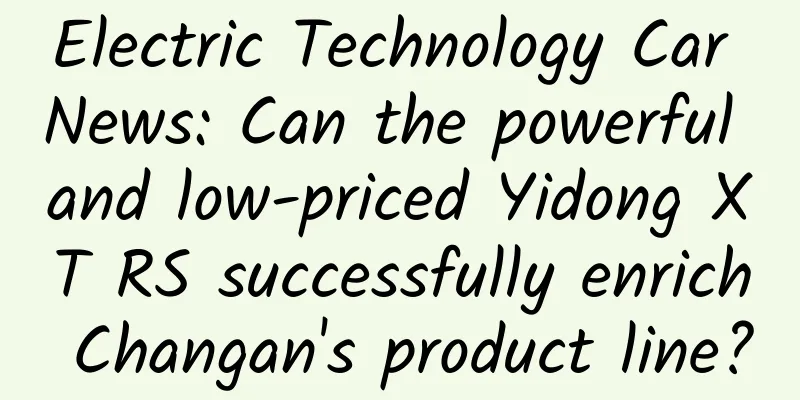Epic summary: Ten common characteristics of the top companies in the past century

|
In the 19th century, entrepreneurial opportunities were concentrated in the European market and traditional industries, in the 20th century, entrepreneurial opportunities were concentrated in the American market and IT industry, and in the 21st century, entrepreneurial opportunities are concentrated in the Chinese market and emerging Internet industries. The author of this article used statistics to study thousands of companies, identified hundreds of outstanding companies with outstanding long-term performance, and found the common characteristics of these top companies in the world. The study found that the strategies these companies adopted throughout their decades of success consistently followed three basic principles:
As of December 28, 2013, the following are non-administrative monopoly enterprises with a market value of more than US$100 billion and established after 1900: 1911, IBM, market value of $198.9 billion, IT technology 1916, Boeing, market value $102.8 billion, aerospace 1921, Schlumberger, market value $116.3 billion, oil services 1923, Disney, market value $129.7 billion, cultural entertainment 1933, Toyota, market value $187.9 billion, automobile, Japan 1956, Berkshire Hathaway, market value of $290 billion, financial investment 1962, Wal-Mart, market value of $252.4 billion, commercial retail 1963, Comcast, market value $134.1 billion, entertainment 1968, Intel, market value of $126.6 billion, IT manufacturing 1969, Samsung Electronics, market value $191.4 billion, IT manufacturing, South Korea 1972, SAP, market value $101.5 billion, IT software, Germany 1975, Microsoft, market value $309.5 billion, IT software 1976, Apple, market value of $510.7 billion, IT technology 1976, VISA, market value $139.2 billion, financial services 1977, Oracle, market value $167.8 billion, IT software 1978, Home Depot, market value $113.5 billion, commercial retail 1982, Vodafone, market value $189.2 billion, IT telecommunications, UK 1984, Cisco, market value of $115.9 billion, IT manufacturing 1985, Qualcomm, market value of $123.3 billion, IT manufacturing 1987, Gilead Sciences, market value $114.9 billion, biopharmaceuticals 1995, Amazon, market value of $182.7 billion, IT Internet 1998, Google, market value of $371.4 billion, IT Internet 1998, Tencent, market value of $112.5 billion, IT Internet, China 1999, Alibaba, market value of $120 billion, IT Internet, China 2004, Facebook, market value 141.1 billion US dollars, IT Internet ——What can you see from the above 25 top global companies? If we were to list all the companies in the world with a market value of more than $100 billion, the list would be much longer. If we make a division starting from 1900, we can see that most of the top European companies have disappeared, while most of the top American companies are still on the list. What is the reason for this? Because since the end of the 19th century, the United States has surpassed Europe and grown into the world's largest market. Based on this world's largest domestic market, outstanding companies in emerging industries in the United States can easily defeat competitors in other regions through scale advantages and obtain priority tickets to grow into world-class companies. European companies, on the other hand, have gradually been marginalized in the great wave of the global industrial revolution. Whoever can adapt to the changes in the market will be able to build a century-old foundation Schlumberger is a living example of this. At the end of the 19th century, the oil industry began to develop rapidly. Shell and BP in Europe were the first giants in the market. As oil extraction became increasingly difficult, a new professional technical service market was born. In 1921, Schlumberger was established. As the earliest oil exploration and drilling service company, Schlumberger had already established a leading position in technology from the beginning. The "Drilling Electric Signal Research" published in 1927 was one of the basic technologies in this industry. Schlumberger was originally a European company. Its emergence is a reflection of Europe's leading level of science and technology. However, if it had been rooted in Europe, Schlumberger would not have its current industry position. Before and after World War II, the world oil market underwent a huge change. The US market became increasingly important, and the oil extraction industry in the Gulf of Mexico flourished. In 1940, Schlumberger moved its headquarters to Houston, the United States, and promptly shifted its business focus to the American market, thereby gaining space for further development and growth.
In the fiercely competitive oil service market, no company can maintain its leading position for a long time by relying on its own technology. Therefore, relying on the funds accumulated from its industry position to continuously acquire and make up for its shortcomings has become an important magic weapon. Since the 1950s, Schlumberger has acquired several companies almost every year. In 1952, it acquired Forex to enter the drilling market. In 1956, it acquired Johnston Testers to become a comprehensive logging company. In 1993, it acquired IDF to become a drilling fluid service provider. In 2010, it acquired Smith to become a drill bit production giant. It is through business adjustments and acquisition expansion that Schlumberger has continued to move towards emerging and more promising blue oceans and has grown continuously over the past 100 years, making it the "youngest" top company in the oil and energy industry chain. Since the 1920s, there has never been a top multinational company (non-state-owned enterprise) in the oil industry worldwide. Boeing is another great example of a company that adapts to the market In 1903, the Wright brothers developed the world's first practical airplane and founded their own Wright Aircraft Company. Of course, today we know that the Wrights did not have the last laugh. Boeing, founded in 1916, was not very prominent among the early aircraft companies. Like many mainstream aircraft companies at the time, Boeing's business was mainly based on government military orders. It was not until the end of World War II that Boeing stood out. World War II was the fundamental force that changed all this. Before World War II, military business was the mainstream of the market, but with the end of World War II, the aircraft market structure has undergone tremendous changes, the traditional military market has shrunk, and the large civil aircraft market has begun to rise and grow.
In 1957, the Boeing 707 civil jet airliner, which was improved on the basis of the original aerial refueling aircraft, was a great success and received thousands of orders. Boeing has since established a leading position in the commercial airliner market. Among all the military aircraft companies at that time, Boeing was the first to make the decision to transform. It was this timely transformation and entry into the blue ocean market that allowed Boeing to have the last laugh and become the new king of the aerospace market. Historically, Boeing was not the developer of the first aircraft, nor the pioneer of the first civil aircraft, but the products improved by Boeing in the civil airliner market best adapted to customer needs and met customer needs to the greatest extent in terms of safety, space, comfort and cost-effectiveness. As a result, Boeing succeeded and has persisted in maintaining this leading position to this day. Boeing's success tells us that having the ability to respond quickly to the market and constantly insisting on micro-innovation of products is an important way to build a great company. Innovation in business models is also important In the 1920s, the Hollywood film industry began to rise, and Disney also began to join the wave of entrepreneurship during this period. In 1928, Disney launched the world's first sound cartoon with Mickey Mouse as the protagonist, which set off a social upsurge. Subsequently, Disney launched the world's first animated feature film, Snow White and the Seven Dwarfs, and the first widescreen animated film, Lady and the Tramp. Until nearly a hundred years later, in the 1990s, it was still Disney that launched the world's first digital animation, Toy Story. It is the introduction of these leading multimedia technologies that has allowed Disney's cartoons to always have the best visual experience among contemporary works and brought about a wide range of social influence.
But Disney's exploration is not limited to this. The reason why Disney was able to surpass all cultural media companies of his time and achieve greater commercial success is that he established a unique business model in the cultural industry. - Disney believes that for the film industry, the story is not the most important, but the image is the core. The downstream industrial chain of Disney theme parks and toy sales, which extends around the eternal character images, has enabled Disney to have a larger market scale, lower costs, and more long-term and stable profit returns. The revelation that Disney brings to us is that innovative products can bring temporary success, while innovative business models can bring lifelong success. Financial mergers and acquisitions are another important means of gaining scale cost advantages. That's what Comcast does. In the 1960s, the cable TV industry began to rise. At that time, Comcast was just a cable TV service provider in a third-tier small city in the United States. As an industry with homogeneous competition, it is not easy to achieve innovation in products. After more than ten years of management experience accumulation and the ultimate in cost efficiency, Comcast embarked on the road of large-scale acquisition and expansion.
In 1986, it acquired Group W Cable, doubling its size. In 1988, it acquired Storer Communications. Inc. became the fifth largest cable TV operator in the United States. It acquired Amcell in 1992 and Maclean-Hunter's U.S. business in 1994, becoming the third largest cable TV service provider in the United States. It acquired Jones Intercable in 1998 and Lenfest Communications in 2000. In 2002, it spent $47.5 billion to acquire AT&T Broadband Cable Systems, becoming the largest cable TV service provider in the United States. Whether it is an innovative business model or financial mergers and acquisitions, the purpose is to achieve economies of scale. If innovation is not possible, simple and quick acquisitions and mergers are the best strategy to achieve the goal. Simple and effective execution is the key Berkshire Hathaway, an investment company founded by Warren Buffett, is a typical example. After World War II, the U.S. financial securities market matured, the value investment theory established by investment guru Graham became popular, pension funds and mutual funds bought high-quality blue-chip stocks in batches, the speculative trend faded, and the stable stock market provided fertile ground for growth for securities investors who recognized the intrinsic value of companies. In 1956, Berkshire Hathaway was established, and Buffett became the most loyal believer of the value investment school, buying when the value of a company is underestimated and selling when the value of a company is overestimated. If you gave Buffett $10,000 to manage in that year, today this principal will increase to $270 million. This is the magic of the stock god turning stone into gold.
The success of Berkshire Hathaway tells us that if we persist in doing the right things in the right place and in the right direction, we will eventually achieve great success. It’s that simple. World War II was a historic turning point in the history of global industrial development in the 20th century. Before this, the leading industries that dominated the global economic development were petroleum, energy, chemical, steel, machinery, automobile, aircraft, train, ship, aerospace, and military. After this, their brilliance was overshadowed, and the innovation of the IT industry became the most dazzling star in the center of the stage. Of the 25 top global companies, 14 are from the IT industry. In other industries, innovative technologies and services are also giving rise to new business opportunities. In the past hundred years, no top bank or insurance company has been born. Berkshire Hathaway comes from the securities investment industry, and VISA comes from the credit card industry. In the past hundred years, no top department store has been born. Walmart came from the supermarket chain, and Home Depot came from the building materials store chain. In the past hundred years, no top traditional media company has been born. Comcast comes from the cable TV industry. In the past hundred years, no other top chemical pharmaceutical company has been born. Gilead Sciences comes from the biopharmaceutical industry. Over the past fifty years, no top automobile, aircraft, machinery, petroleum, or chemical companies have been born. In those industries where technological change is slow and the market is mature, the industry structure has been fixed, and the existence of traditional monopoly giants has curbed the growth space for new companies. Only through innovative technological products and innovative business models, in the newly developed blue ocean market, can new companies have the possibility of growing into towering trees. And in this era, the most important opportunity is the unprecedented huge blue ocean brought about by the wave of changes in the IT technology industry. The earliest star was IBM IBM was founded in New York in 1911. In the early days, it was mainly engaged in punched card data processing business, which was the time clock used for employee attendance. In 1932, IBM invested $1 million to build its first corporate laboratory and began technical cooperation with prestigious universities such as Harvard and MIT, laying the foundation for IBM's strong technological accumulation. By 1935, IBM's card counting machine had captured 85% of the US market share. In the 1950s, it became a computer system contractor for the US Department of Defense. When the mainframe computer industry emerged in the 1960s, IBM naturally became the industry leader. By 1974, the number of computers produced by IBM was four times the total number of all other computer manufacturers in the world, making it an absolute monopoly in the industry. It can be said that the early development history of the IT industry is the history of IBM's corporate growth.
However, technology is developing rapidly, and even IBM, which has accumulated a lot of experience, has almost capsized several times. In 1976, the PC launched by Apple brought great changes to the computer industry, and the mainstream market shifted from mainframes to minicomputers. Faced with the impact of personal computers, IBM quickly transformed and defeated the challenger Apple with a horizontally open business model, continuing to dominate the emerging personal computer market. In 1993, IBM once again suffered huge losses under the impact of new generation challengers Compaq and Dell. Faced with the changes in the market environment, IBM realized that the competitiveness of the consumer market is increasingly focused on channels, while its own advantage lies in technology accumulation. The high cost makes it unable to compete with the new generation of enterprises, so it once again transformed and developed into the high-value enterprise service market, regaining its life. Over the past hundred years, IBM's business focus has been constantly shifting, and it has been dancing like an elephant in the ever-changing IT technology industry. Its success is a typical example of adapting to the market, using technological innovation and excellent management to keenly perceive changes in market temperature, and quickly adjusting direction to enter the emerging blue ocean. IBM's success gave birth to another legendary Microsoft In 1975, Bill Gates founded Microsoft, which was just an unknown small software company in the early days. The emergence of Apple changed his fate. In 1980, IBM launched a new personal computer to compete with Apple. It outsourced components extensively. Intel won the chip contract and Microsoft won the crucial operating system contract. This contract was the most important turning point in Microsoft's development history.
Due to time constraints and complex procedures, Microsoft even bought a program called QDOS from a programmer Tim Patterson for $50,000, and then provided it to IBM after slightly improving it. This system is the MSDOS we know today. With the popularity of IBM PC, Microsoft's operating system quickly became the industry standard. Since then, Microsoft has stepped up its research and development, introducing windowing technology into the new generation of WINDOWS systems. With generation after generation of updates, it has become increasingly powerful along with the growth of the personal computer industry. Microsoft's success tells us that standing on the shoulders of giants and leveraging their momentum is an important shortcut for small businesses to rise to the top. Intel's story is equally interesting In 1947, Shockley, an engineer working at Bell Labs in the United States, invented the transistor. The invention of this technology was a milestone innovation in the modern IT industry, and Shockley won the Nobel Prize for it. But innovation is not a guarantee of business success. In 1955, Shockley resigned and founded Shockley Semiconductor Laboratory, which attracted a large number of talented young engineers to join. However, under poor management, the new company soon fell apart. The eight legendary engineers known as the "Traitorous Eight" resigned again and jointly founded Fairchild Semiconductor, a company with a prominent reputation in the early days of Silicon Valley. In 1968, Noyce and Moore, two of the "Traitorous Eight", resigned again and founded Intel.
In 1971, Intel launched the world's first microprocessor, which became the standard chip for IBM PC in the 1980s and has continued to grow and develop with the rise of the personal computer industry. Intel's success is undeniably a success of technological innovation. From micron to nanometer processes, from 4-bit to 64-bit processors, from Pentium to Core, from silicon technology, microarchitecture to chip and platform innovation, Intel has always been a leader in innovation in the most cutting-edge technology fields of the IT computer industry. Intel's success is also a success of management. It was the joining of Andy Grove, an excellent manager, that prevented Intel from repeating the mistakes of Shockley and Fairchild, and achieved continuous technological innovation and growth in the semiconductor industry. Intel's success is also a success standing on the shoulders of giants. Without Shockley and IBM, Intel would not have achieved such a prominent legend today. IBM also gave birth to SAP's success In the 1970s, IBM mainframes were popular. IBM made huge profits by selling mainframe computers to corporate customers and providing them with personalized software solutions. Five software engineers from IBM's German branch believed that it would be time-consuming and labor-intensive to redevelop software for each enterprise, and it would be better to design a unified set of standard software to provide to customers. Their proposal was rejected by IBM's decision-making department. It was obvious that such a plan would eventually damage IBM's profits.
The five engineers who could not realize their dreams eventually chose to resign and start their own business. The enterprise standard management software they launched was quickly welcomed by the market, creating a new blue ocean market. SAP's success tells us that if you find the pain points of customers and the market cannot meet them, as long as you can come up with practical and innovative products, success will be a natural result. IBM is still the cradle of Oracle In 1970, IBM researcher Edgar Cotter published a famous paper, "A Relational Model of Data in Large Shared Databases," which laid the theoretical foundation for relational database software. However, IBM's software department was reluctant to launch related products in order not to affect its own interests because it was based on hierarchical database software. In 1976, Ellison, who was developing software for IBM, read this paper and immediately realized its huge commercial value. He immediately brought two colleagues to found Oracle. Oracle's software was well received by the market as soon as it was launched, and soon received orders from the US Central Intelligence Agency and the Naval Intelligence Agency. Since then, Oracle has been leading the development of the database software market and has continued to grow with the widespread application of database software in enterprises.
Oracle's success tells us that once you realize a market opportunity, execution is more important than burying yourself in research and development. IBM's position is so important that almost all the stars in the IT industry have stories entangled with it. Apple's rise and fall is particularly sad In 1976, two DIY electronics enthusiasts, Steve Jobs and Steve Wozniak, founded Apple in a garage. Their small personal computers attracted attention in the market with their amazing innovations from the beginning, and quickly grew into an early leader in the PC market. Unfortunately, Apple, which only had innovation but lacked excellent management capabilities, was eventually defeated by IBM, and its founder Steve Jobs was forced to leave, becoming a forgotten company in the 1990s. Apple’s early failure once again tells us that innovative products can only bring short-lived glory, but market competition is continuous. Only excellent management combined with continuous innovation can maintain long-term prosperity.
In 1997, Apple, which was on the verge of bankruptcy, brought back its founder and soul, Steve Jobs, who had been polished in the market for a long time. The greatest comeback in the history of business began. From iPod portable players, iMac personal computers, MacBook Air laptops, to iPhone mobile phones and iPad tablet computers, Apple has continuously refreshed the world's expectations for perfect technology products with its persistent spirit of innovation. In 2011, with the death of Steve Jobs, Apple's innovative spirit seemed to be fading away. Apple's success not only brings us inspiration for innovation, but also the challenge of how to maintain continuous innovation. Cisco has its own solution to this problem In 1984, Cisco Systems was founded by two directors of the Stanford University Computer Center. They first designed a networking device called a "multi-protocol router" to connect incompatible computer LANs on campus into one network, thus ushering in the Internet era. Based on the growing Internet equipment market, Cisco has achieved rapid growth. However, they soon realized that technology is developing rapidly and it is impossible to maintain the leading technology by relying on their own research and development.
What to do? Cisco's solution is: acquisition. Through the early accumulation of leading positions, Cisco continuously acquires emerging technologies and teams in the market, and then ensures its long-term leadership in the industry through its own huge distribution channels. In short, Cisco focuses on becoming a distribution platform for innovative technology products. Cisco's success is the success of an innovator, but also the success of its acquisition strategy. Qualcomm provides us with another idea Qualcomm was founded in 1985. In the early days, it was mainly engaged in the application of mobile communication technology in the transportation industry. In 1989, it first launched a mobile communication solution based on CDMA technology, and has since become the standard setter for this emerging communication industry. In the process of the evolution of 2G to 3G to 4G technology, Qualcomm has accumulated more than 4,000 CDMA patents and has always led the pace of technological development in the mobile industry.
With the advent of the smartphone era, Qualcomm's mobile microprocessor was the first to support the Android operating system. With the widespread popularity of Android, Qualcomm has also become the dominant player in the mobile chip industry. Qualcomm's success is very similar to Intel's success. In a high-tech field, Qualcomm has blocked almost all competitors' survival space through high investment in research and development, far-leading technology levels, and extensive patent barriers. Unless there is a major change in the industry, Qualcomm's position will be unchallenged. With the increasing popularity of IT technology, many traditional industries have undergone profound changes. Whoever can adapt to the times and introduce IT technology into traditional industries first will gain the ability to subvert giants. Qualcomm provides us with another idea In 1963, Carrefour launched the supermarket hypermarket business model in Europe, and Walmart soon copied it to the U.S. In the 1980s, Walmart once again took the lead in introducing emerging IT technologies and carried out a comprehensive process transformation of logistics and inventory.
With the help of IT technology, Wal-Mart's chain expansion strategy was effectively implemented, and the large-scale nationwide expansion of branches further reduced channel costs. Once the scale advantage was established, under the Matthew effect, the erosion of traditional department store channels gradually intensified, and finally surpassed the century-old Sears Department Store in the 1990s to become the new generation of retail king. Walmart's success is the result of its ability to adapt to the market, introduce emerging business models and the latest IT technologies in a timely manner, strengthen process management, and reduce costs, and has since become increasingly powerful. Home Depot's success formula is exactly the same as Wal-Mart's Home Depot was founded in 1978 and began to introduce IT verification technology in 1983. By transforming the warehousing and logistics processes and transforming the traditional building materials distribution channels with the chain building materials department store model, it has achieved rapid development since then.
It took Home Depot only 20 years to grow into the world's second largest retail giant after Walmart. The secret of its success is the same as Walmart's: introducing a new chain warehouse store business model, using IT technology to improve efficiency and reduce costs, and finally achieving continuous growth through economies of scale. The financial industry introduced IT technology to give birth to VISA VISA was formerly the payment business department of Bank of America. In 1958, it launched the first BankAmericard card with an innovative revolving credit function. In 1973, it launched an electronic authorization system. In 1974, it launched an electronic clearing and settlement system. In 1976, it was reorganized into VISA Bank Card Company and expanded its international business. In 1983, VISA launched a global ATM network, allowing cardholders around the world to withdraw cash from ATMs 24 hours a day, bringing convenience to modern business and leisure travel.
In 1993, VISA was the first to apply neural network technology to electronic payment, effectively reducing the risk of credit card fraud and ensuring financial security. VISA's success is a typical example of the financial payment industry taking the lead in introducing IT technology, constantly exploring new applications, and moving towards the blue ocean market. Emerging industries include not only IT technology, but also bio-genetic technology In the past hundred years, with the arrival of aging, the market of the pharmaceutical industry has grown larger and larger, but the world's top pharmaceutical companies are almost all chemical pharmaceutical pioneers founded in the 19th century. The development of modern medical technology has entered a new level. Traditional chemical drugs are helpless in treating certain viruses, such as AIDS and cancer. This is a huge blue ocean market. Whoever makes a breakthrough in bio-genetic technology first will have great business opportunities. Gilead Sciences is a company at the forefront of technological innovation: Founded in Silicon Valley in 1987, it is the only top company from a non-IT industry that has emerged in the past two decades. Judging from the current clinical tests, Gilead is getting closer and closer to the threshold of success.
The success of Gilead Sciences represents the revolution in biopharmaceutical technology in the medical industry and the expansion into the blue ocean market of antiviral drugs such as AIDS. Emerging technologies have brought about huge blue ocean markets, but in today's globalized era, companies that are only satisfied with the local market are destined to fail in their quest to become top companies. Vodafone is a successful example of cross-regional expansion Vodafone was founded in 1982 as a mobile phone technology department of British company LaCour Electronics. It became independent in 1985 and established the first analog signal network in the UK. By 1987, Vodafone was already considered one of the world's largest mobile communication service companies. However, the market space in the UK is limited after all. In 1999, Vodafone merged with American company Airtouch Communications, and in 2000, it merged again with German company Mannesmann, and has since become the largest telecommunications service company in the European and American markets.
Vodafone's success is first of all based on its success in the mobile communications market. It has achieved leapfrog development in the environment where mobile communications have replaced traditional fixed-line communications. Secondly, it is the success of its financial M&A strategy. Through the scale expansion strategy in the three major markets of the United Kingdom, the United States and Germany, it has gained further scale advantages and has since become one of the top companies. It is very important for companies in backward areas to enter the US market if they want to join the top ranks. Toyota's road to success can give us some inspiration Toyota Motor Corporation was spun off from the Automobile Department of Toyota Automatic Loom Works in 1933. As a latecomer in the automobile industry, its first pot of gold came from the army truck orders during Japan's invasion of China in 1937. In 1950, the huge order of $4.6 billion from the United States during the Korean War gave Toyota another boost, and it has developed rapidly since then. From the beginning, Toyota realized that as a latecomer in the automotive industry, it was impossible to compete with the European and American giants in terms of technological innovation. Therefore, strengthening management, reducing costs, and competing with Western giants with economical and fuel-efficient small cars were the only way to develop. Under this guiding ideology, Toyota developed a "lean production management" model. The low-priced economic car "Corolla" launched in 1966 was a great success, and it has since established its leading position in the Japanese automobile market.
The two oil crises in 1973 and 1979 brought about tremendous changes in the American auto market. Large cars were unsalable, while economical and fuel-efficient small cars were popular. American auto giants were suddenly confused. Toyota seized the opportunity and entered the United States with all its strength, successively launching Camry and Lexus models developed specifically for the American market. From then on, it made the leap to become the world's largest automobile company. Toyota's story tells us that we should not innovate blindly, and success must be based on comparative advantages. In the absence of innovation capabilities, low labor prices and lean management can be used as advantages in the early stage to focus on developing the low-end market, and then patiently wait for changes in the market structure and overtake others when opportunities arise. South Korea's Samsung Electronics is also an excellent executor of this strategy. Samsung Electronics was established in 1969 as a subsidiary of Samsung Corporation, which was founded in 1938, to enter the IT industry. In the 1970s, Samsung Electronics began to enter the fields of refrigerators, washing machines and televisions, entered the memory chip field in 1983, and entered the mobile phone industry in 1997. The most important reason why Samsung Electronics has been able to continue to expand, enter the home appliance, semiconductor and mobile phone industries dominated by American and Japanese giants, and grow into an industry leader is that it is good at learning. In the early days, it used its low labor price advantage to gradually squeeze out and seize the market share of Western giants. This is the key to Samsung's success in the home appliance and semiconductor industries.
In the field of mobile phones, Samsung has always been known for its diverse appearance and design. It has launched differentiated competition with Western giants in non-core technologies, waiting for an opportunity to overtake them. From 1997 to 2010, Samsung waited for thirteen years until the smartphone era came. Apple overturned the traditional mobile phone industry, but it stuck to the old ways and remained unchanged. Samsung seized the opportunity to launch large-screen smartphones, meeting the market's diverse product needs, and has since risen to become a new generation of industry leaders. The success of Samsung Electronics is the same as that of Japan's Toyota Motor. As a technological laggard from a developing region, if a company wants to surpass the giants, it can only succeed by seizing opportunities in a timely manner when the market undergoes huge changes through low-cost price advantages and differentiated competition. In the past two decades, the global information industry revolution has entered the Internet era. With the innovation of technology, successful top companies have continued to emerge. Amazon Amazon was founded in 1995 and is one of the earliest e-commerce companies in the world. However, after the dot-com bubble burst in 2000, almost all similar companies went bankrupt, except Amazon, which expanded from an online bookstore to electronic products, audio and video software, and various categories of goods, and developed into the world's largest e-commerce company.
Amazon was not the fastest growing e-commerce company in its early days, but it was the most stable, strictly managed, and most efficient company in terms of capital operation. It was this superb management ability that allowed Amazon to survive the cold winter of the dot-com bubble burst and become the leader of the e-commerce industry. After 2000, Amazon gradually grew into a retail giant that could compete with Walmart through global expansion, the construction of terminal logistics centers, and the application of cloud computing technology. Google was founded in 1998. As one of the earliest Internet search engine companies, it achieved great success through its pioneering advertising business model and quickly became a leader in the industry. As search engines gradually became the information portal of the Internet, Google's advertising revenue continued to grow, gradually replacing traditional media forms and becoming the earliest industry leader in the Internet era.
After 2000, Google has maintained a close focus on innovation, launching a series of great products such as Google Maps and the Android operating system, and continuing to explore cutting-edge IT fields such as robots, driverless cars, and wearable glasses. Google's success is also a success of innovation. It is one of the greatest technological innovators of our time. Facebook was founded in 2004 and is the latest IT Internet giant to rise in the 21st century. Facebook is one of the earliest social networking sites in the United States. Through continuous experience improvement, it quickly became popular among young people. After 2006, it developed from the campus market to the whole social network. In 2008, it surpassed Myspace and has been leading the Western social networking market ever since.
Facebook's success is the result of continuous micro-innovation and constantly improving product experience, which has enabled Facebook to surpass one industry leader after another and develop into a new generation of Internet giant. In the Internet age, it is no longer just American innovators leading the way; Chinese entrepreneurs are also beginning to join the ranks of the world's top companies. Tencent Holdings Limited Tencent was founded in 1998 as a follower of the ICQ instant messaging product. Through product improvements and business model innovation, it became the world's earliest social networking platform. After 2003, Tencent entered the rapidly growing online game market and achieved great success relying on the traffic advantage of the social platform and high-quality product experience, becoming the world's largest online entertainment company.
In 2011, Tencent launched the WeChat product and promptly transformed into a mobile communication platform. It once again achieved huge success and became the world's largest mobile social platform in terms of user base. Tencent’s success is firstly due to its innovative business model and secondly due to its success in transforming in a timely manner to adapt to market development. Alibaba Alibaba was established in 1999. It was originally an information service company for China's foreign trade industry. In 2003, it launched the Taobao trading market to compete with ebay eBay. Taobao solved the trust problem in the e-commerce industry through its innovative Alipay guaranteed transaction technology. It quickly gathered market popularity through the free C2C trading business model. It took only three years to drive ebay out of the Chinese market and become the new leader in this industry.
After 2010, Alibaba launched new businesses such as Tmall Mall, Alibaba Cloud Service, Cainiao Network, Yu'ebao, Zhong'an Online Insurance, etc., and continued to expand in the fields of Internet commerce, logistics, finance, etc., becoming one of the most successful Internet giants in the world. Alibaba's success is the success of innovative business models, and the second is the success of adapting to the market's continuous development towards a new blue ocean. What are the common success factors of the above 25 top global companies?
The last point is not a summary, just a prophecy Entrepreneurship opportunities in the 19th century were concentrated in the European market and traditional industries, entrepreneurial opportunities in the 20th century were concentrated in the US market and IT industries, and entrepreneurial opportunities in the 21st century were concentrated in the Chinese market and emerging Internet industries. Why? Because China has a population of 1.3 billion and has a rapid and stable development space, this is a huge blue ocean. Excellent companies growing in this market will gain a lower labor cost advantage compared to Western companies, and they have invincible competitiveness. In the foreseeable decade, China will replace the United States as the world's largest market. In the emerging IT Internet industry, China has become a global innovation center that is side by side with the United States. It is already a fertile ground for nurturing top companies, and it depends on your luck. |
<<: In the next 10 years, which Internet vertical fields are most suitable for entrepreneurship?
>>: How can App developers in difficult situations save themselves?
Recommend
In the next 10 years, which Internet vertical fields are most suitable for entrepreneurship?
[[155596]] I heard that the Internet is full of g...
How to unfreeze QQ? What should I do if I encounter problems during the unfreezing process?
According to the information from Wandong Mobile ...
HTML 5 has won out – but for how long?
[51CTO.com Quick Translation] We have compiled va...
WeChat has secretly launched a new feature! Have you discovered it?
A good product is one that is constantly updated ...
Two directions to help you complete the writing of corporate short video copy!
For our corporate short videos, what is copywriti...
iOS 14's most controversial feature, should it be removed?
The App Library feature is a bright new feature o...
The secrets of B station's operation strategy
In recent years, from the marketing of WeChat pub...
Apple recommends not sliding to close background apps: otherwise it will affect battery life
Apple said that swiping to close apps on your iPh...
Lanzhou shared power bank mini program has customized functions. How much does the shared power bank mini program cost?
With the advent of the 5G era, the network speed o...
Bidding Promotion | How to reduce costs and increase clicks?
The competition environment is intensifying. Alth...
Breaking the "discomfort" of wearable electronic devices? A new material opens a new era of smart wearables!
□ Li Chuanfu With the rapid development of techno...
Counterpoint: Global semiconductor industry revenue to grow 17% in the third quarter of 2024
The global semiconductor industry's revenue i...
"Convergence·Food Safety Guide" series丨Are you doing the right thing to relieve pain? Tips for relieving pain at home
Generally speaking, pain is an uncomfortable feel...
Pre-prepared meals are becoming more and more popular. Is it unhealthy to eat them frequently?
Have you heard of pre-prepared meals? There is a ...









